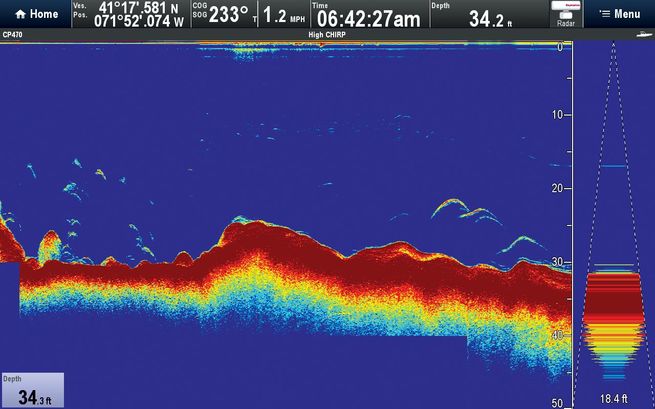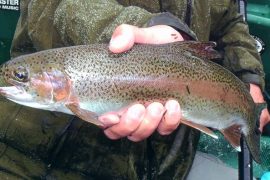
“Those are white seabass,” said Capt. Mark Wisch, peering at the fish-finder display in the dark of night as we bobbed in 120 feet of water on the backside of Santa Catalina Island off Southern California.
Play Video
Play
Loaded: 0%
Progress: 0%
Remaining Time -0:00
This is a modal window.
Foreground — White Black Red Green Blue Yellow Magenta Cyan — Opaque Semi-Opaque
Background — White Black Red Green Blue Yellow Magenta Cyan — Opaque Semi-Transparent Transparent
Window — White Black Red Green Blue Yellow Magenta Cyan — Opaque Semi-Transparent Transparent
Font Size 50% 75% 100% 125% 150% 175% 200% 300% 400%
Text Edge Style None Raised Depressed Uniform Dropshadow
Font Family Default Monospace Serif Proportional Serif Monospace Sans-Serif Proportional Sans-Serif Casual Script Small Caps
Defaults Done
“Get your bait close to bottom,” he said. I promptly dropped a live squid on a lead-head into the depths. Within seconds, I was hooked up. A series of violent head shakes were all I needed to assume that Wisch was correct.
Five minutes later, the captain sunk the gaff in a silvery 45-pound white seabass, a glory fish that locals call a tanker.
Sophisticated fish finders and sonar systems from brands such as Furuno, Garmin, Humminbird, Lowrance, Raymarine and Simrad make it pretty easy to distinguish fish from other underwater elements such as wrecks or the seabed.
However, there’s one thing these advanced echo-sounding devices cannot do: identify a particular species of fish or any other sea creature. Yet skippers such as Wisch and others have learned how to ID species they see on fish finders. How do they do it?

Keys to Learning
One of the steps in recognizing species is developing an understanding of how echo sounders work. To simplify things, think in terms of bouncing a tennis ball. On dense surfaces, it bounces well. On softer surfaces, it does not.
Similarly, fish-finder signals bounce strongly off certain parts of a fish, including the skeleton and air bladders, Wisch explains. So it’s also important to understand the anatomy and habits of different fish. This can lead you to identify a particular species you mark.
“For example, croakers like white seabass have heavy bone structures and large swim bladders,” says Wisch, “so the croakers generate relatively large marks on a fish finder.
“White seabass also move slowly, and so on a stationary boat, they tend to stay inside the sonar beam angle longer,” he adds. This results in elongated returns, sometimes called “worms,” on the fish-finder display. On the other hand, California yellowtail, a species of amberjack that…





